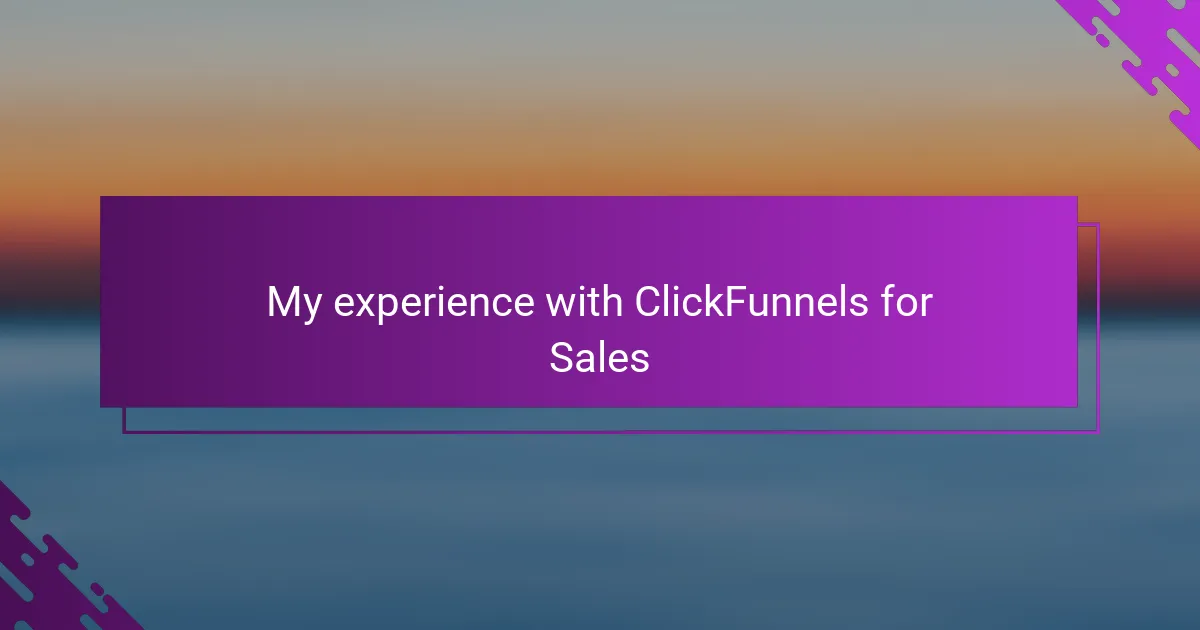Key takeaways
- ClickFunnels simplifies sales funnel creation with an intuitive drag-and-drop editor and pre-built templates, enhancing user experience.
- Effective sales page design focuses on clear headlines, strategic calls to action, and maintaining a clean layout to foster emotional connections and trust.
- Seamless integrations with payment systems and email services boost efficiency, allowing for automated follow-ups that nurture leads.
- Tracking funnel performance in real-time provides valuable insights into visitor behavior, helping optimize sales strategies for better conversion rates.
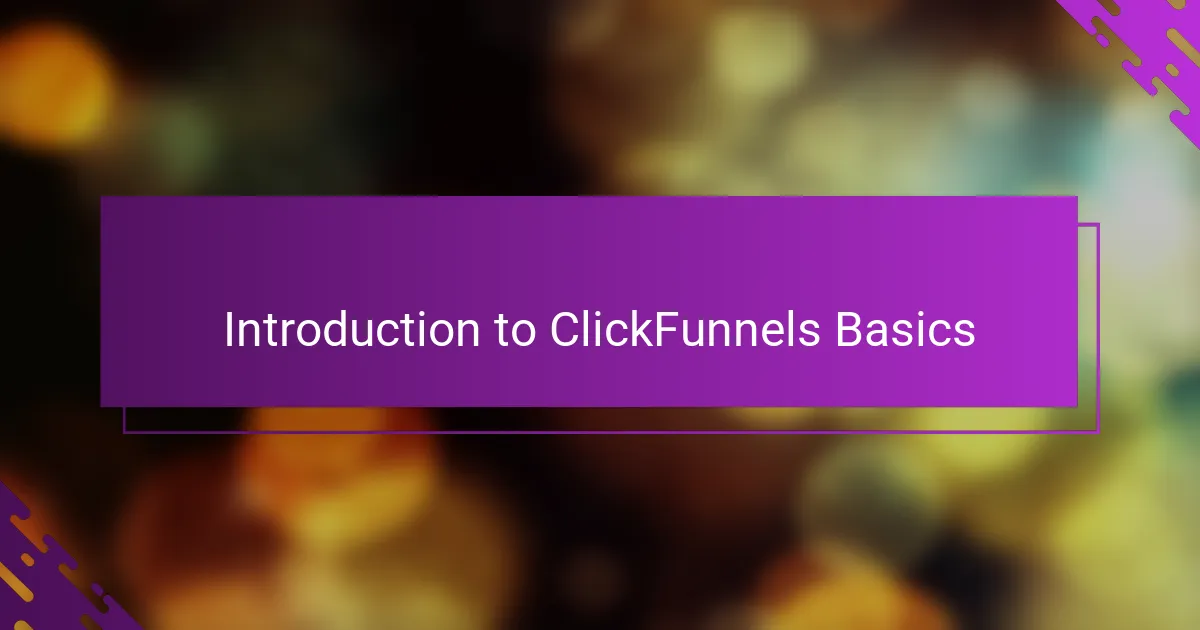
Introduction to ClickFunnels Basics
ClickFunnels is essentially a tool designed to simplify the process of building sales funnels, which are step-by-step paths that guide potential customers toward making a purchase. When I first started using it, I was surprised by how intuitive the drag-and-drop editor felt—it made setting up pages feel less like coding and more like crafting a story. Have you ever felt overwhelmed by complicated website builders? That’s exactly what ClickFunnels aims to solve.
One of the basics that stood out to me was the variety of pre-built funnel templates tailored for different goals, whether it’s collecting emails, selling products, or hosting webinars. This feature saved me countless hours, and it gave me confidence knowing the templates were designed with marketing strategies in mind. It’s like having a seasoned guide right beside you as you build your sales journey.
Another fundamental aspect is how ClickFunnels integrates with other marketing tools, like email autoresponders and payment gateways. From my experience, this seamless connectivity means less technical headache and more focus on creating compelling offers. It made me realize how important it is to have everything work together smoothly when trying to turn visitors into customers.
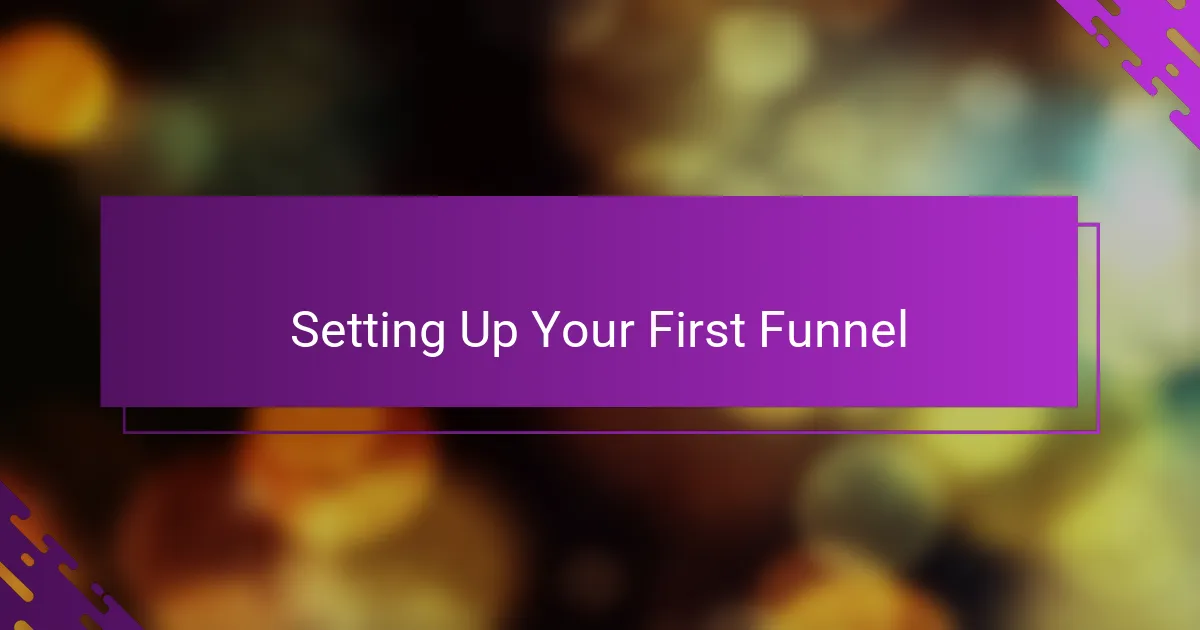
Setting Up Your First Funnel
Setting up my first funnel in ClickFunnels felt surprisingly approachable. I remember sitting down, choosing a template, and within minutes, I had my first page ready. It was almost like assembling Lego pieces—I just dragged, dropped, and customized without any stress about coding.
I did hit a few small snags, though. For example, figuring out how to link pages in the funnel took a bit of trial and error. But that challenge made the experience more engaging; it felt like I was really learning something valuable rather than just following a tutorial. Have you ever experienced that satisfaction when a puzzle finally clicks into place?
What truly impressed me was how easily I could preview the funnel as I built it. Seeing the whole customer journey come alive made the process feel real and purposeful. It motivated me to keep refining each step, making sure nothing would trip up a potential buyer along the way.
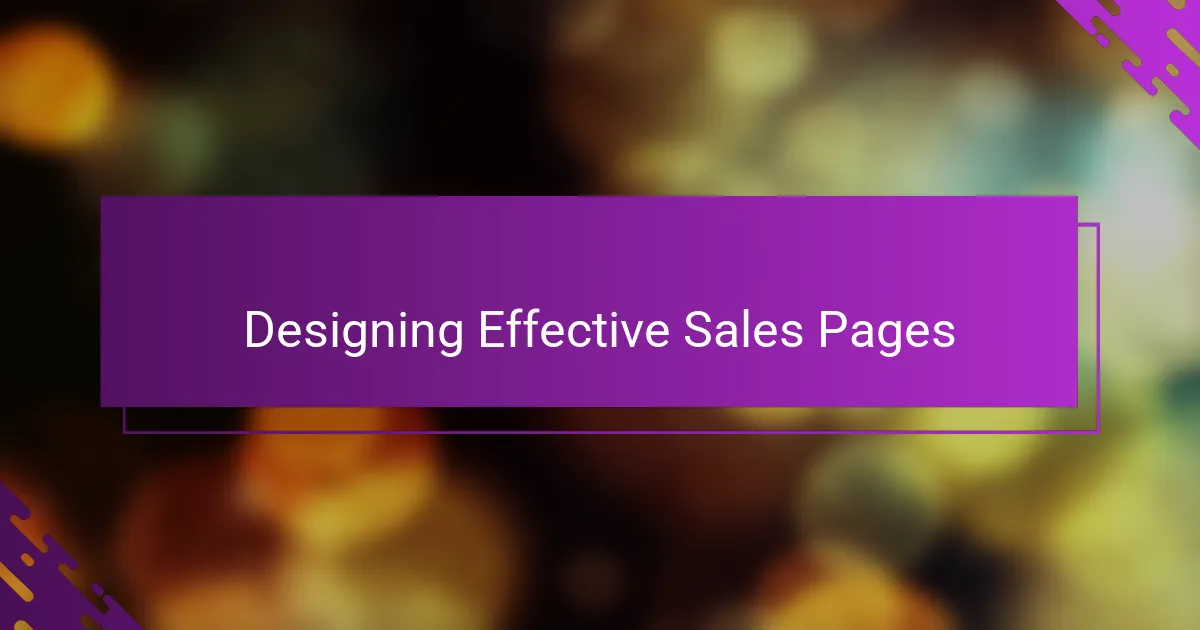
Designing Effective Sales Pages
Designing effective sales pages in ClickFunnels was a game-changer for me. I found that focusing on clear, compelling headlines immediately grabbed attention, while strategically placed call-to-action buttons guided visitors toward their next step without overwhelming them. Have you noticed how a single, well-worded button can make all the difference in persuading someone to buy?
One thing I really appreciated was the ability to customize sections easily, allowing me to tell my product’s story in a way that felt personal and authentic. It wasn’t just about slapping on text and images; it was about crafting an experience that spoke directly to my audience’s needs and desires. This made me realize how important the emotional connection is on a sales page.
I also learned that keeping the design clean and focused helped prevent distractions. Minimal clutter meant visitors could focus on the key benefits without getting lost in unnecessary details. From my experience, simplicity not only looks professional but also increases trust, which is crucial when you’re trying to close a sale online.
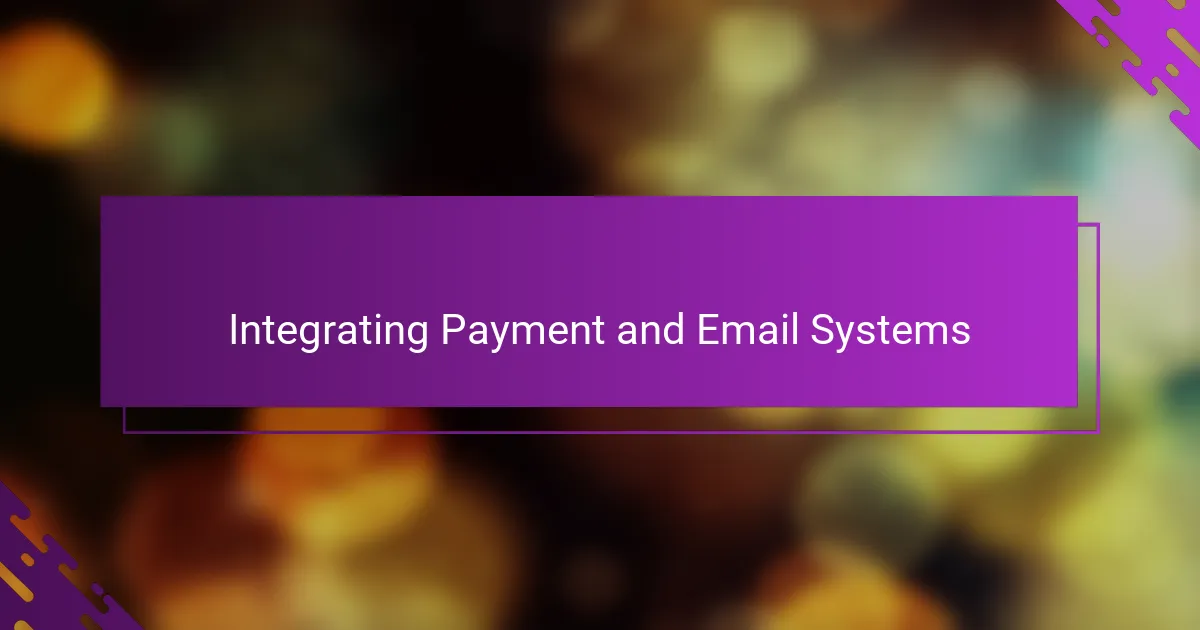
Integrating Payment and Email Systems
Connecting payment systems to ClickFunnels was a smoother process than I expected. I remember feeling a bit anxious about handling transactions securely, but integrating Stripe was pretty straightforward, which immediately put my mind at ease. Have you ever worried about losing sales because of payment issues? This setup gave me more confidence that customers wouldn’t hit any roadblocks at checkout.
When it came to email systems, syncing with my autoresponder was crucial. I was relieved to see ClickFunnels let me effortlessly link with my existing email service, automating follow-ups without extra apps or complicated steps. It made me realize just how powerful automation can be for nurturing leads and turning clicks into loyal customers.
What surprised me most was how well these integrations worked together downstream. As soon as a payment processed, the email sequences kicked in automatically, creating a seamless flow I didn’t have to babysit. That hands-off reliability freed up time and lowered my stress—something every busy person can appreciate, right?
![]()
Tracking Funnel Performance
Tracking funnel performance in ClickFunnels quickly became one of my favorite parts of using the platform. I loved how it let me see real-time data on visitor behavior, conversions, and drop-off points. Have you ever wondered exactly where potential customers might be losing interest? This insight helped me target weak spots instead of guessing blindly.
One feature I found particularly useful was the ability to break down statistics by individual steps in the funnel. It felt like having a microscope on my sales process, showing me not just what happened but why. That kind of detailed feedback motivated me to tweak headlines, buttons, or offers right where it counted most.
At times, the numbers were a bit overwhelming, but ClickFunnels makes tracking simple with clean graphs and clear summaries. From my experience, this clarity turned a potentially stressful task into a manageable one, letting me focus on growth rather than drowning in data. Wouldn’t you agree that knowing exactly how your funnel performs is key to lasting success?
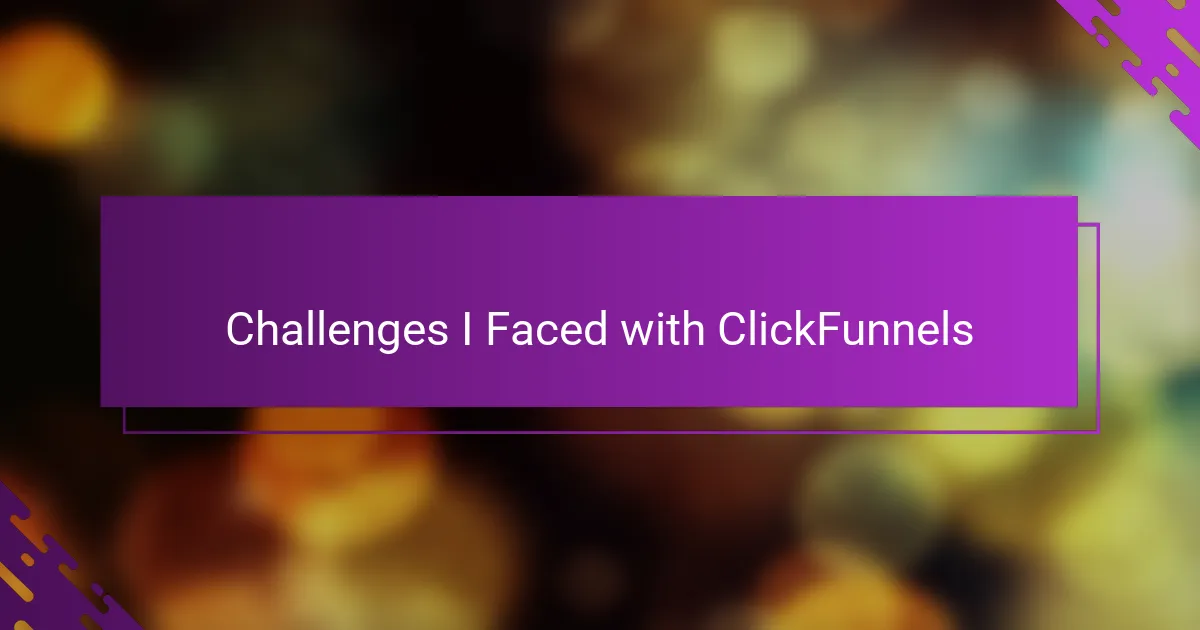
Challenges I Faced with ClickFunnels
There were moments when ClickFunnels felt a bit overwhelming, especially as I tried to customize beyond the basics. I found myself frustrated when the editor didn’t behave exactly as I expected—small quirks like elements not aligning perfectly made me question my design choices. Have you ever spent more time fixing a tiny detail than creating content? That felt all too real.
Another challenge was navigating the pricing structure. At first, it wasn’t clear which features required an upgrade, and that sometimes meant hitting unexpected paywalls. It left me wondering if I could achieve my goals without constantly reaching deeper into my budget, which was a bit discouraging at times. From my experience, transparency around costs is as important as ease of use.
Lastly, the learning curve with some advanced features caught me off guard. While the platform offers powerful tools, figuring out how to use them effectively took patience and trial. I often wished for more step-by-step guidance tailored to beginners like me. Doesn’t it feel better when software meets you where you are, rather than expecting you to catch up instantly?
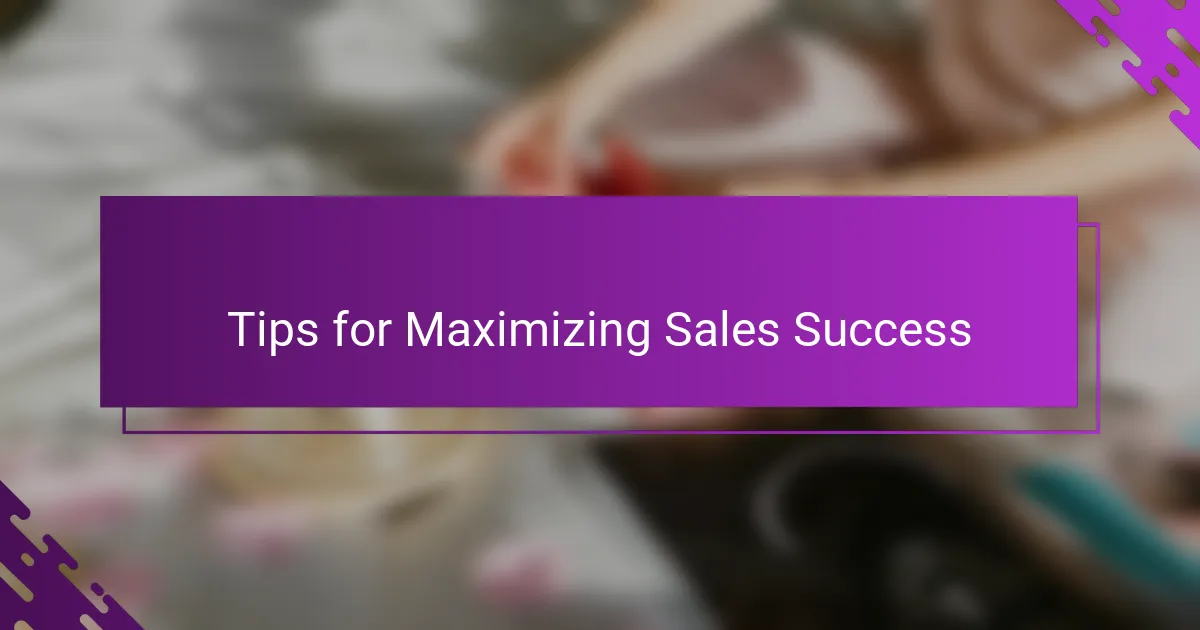
Tips for Maximizing Sales Success
One tip I found invaluable was to constantly test different elements in the funnel. For example, tweaking headlines or button colors sometimes led to surprising jumps in conversion rates. Have you ever changed something small and suddenly seen better results? That kind of experimentation kept me curious and proactive.
Another approach that really paid off was focusing on the customer’s journey from their perspective. I made it a point to eliminate any distractions or confusing steps that might cause hesitation. When you put yourself in their shoes, you start spotting those friction points more clearly—and fixing them makes the difference between a quick sale and a lost lead.
Finally, I can’t stress enough the importance of leveraging follow-up sequences. Setting up automated emails after a visitor leaves without buying felt like planting seeds for future sales. Have you noticed how a well-timed nudge can turn a maybe into a yes? From my experience, combining funnel optimization with strong follow-ups creates a much stronger sales machine.
